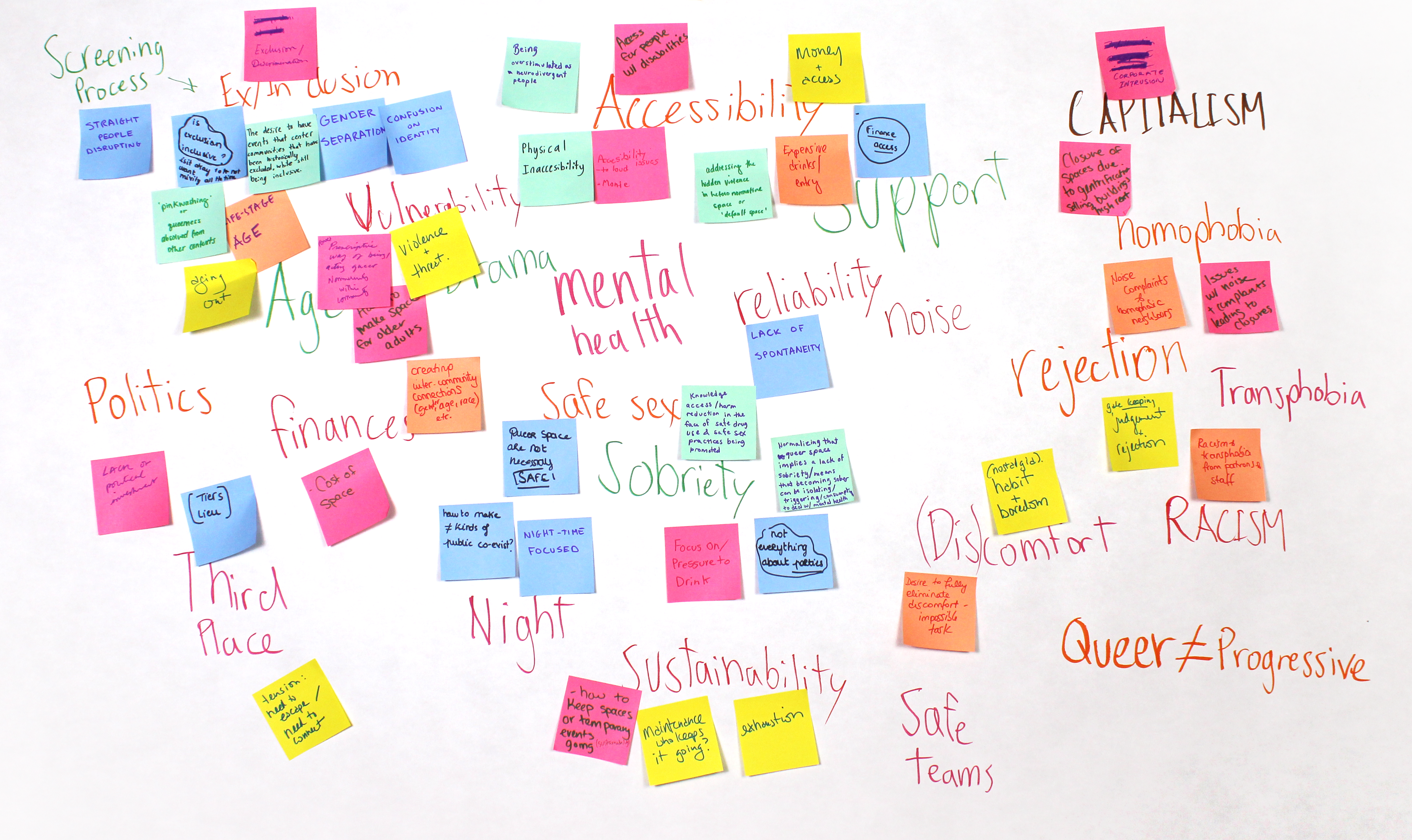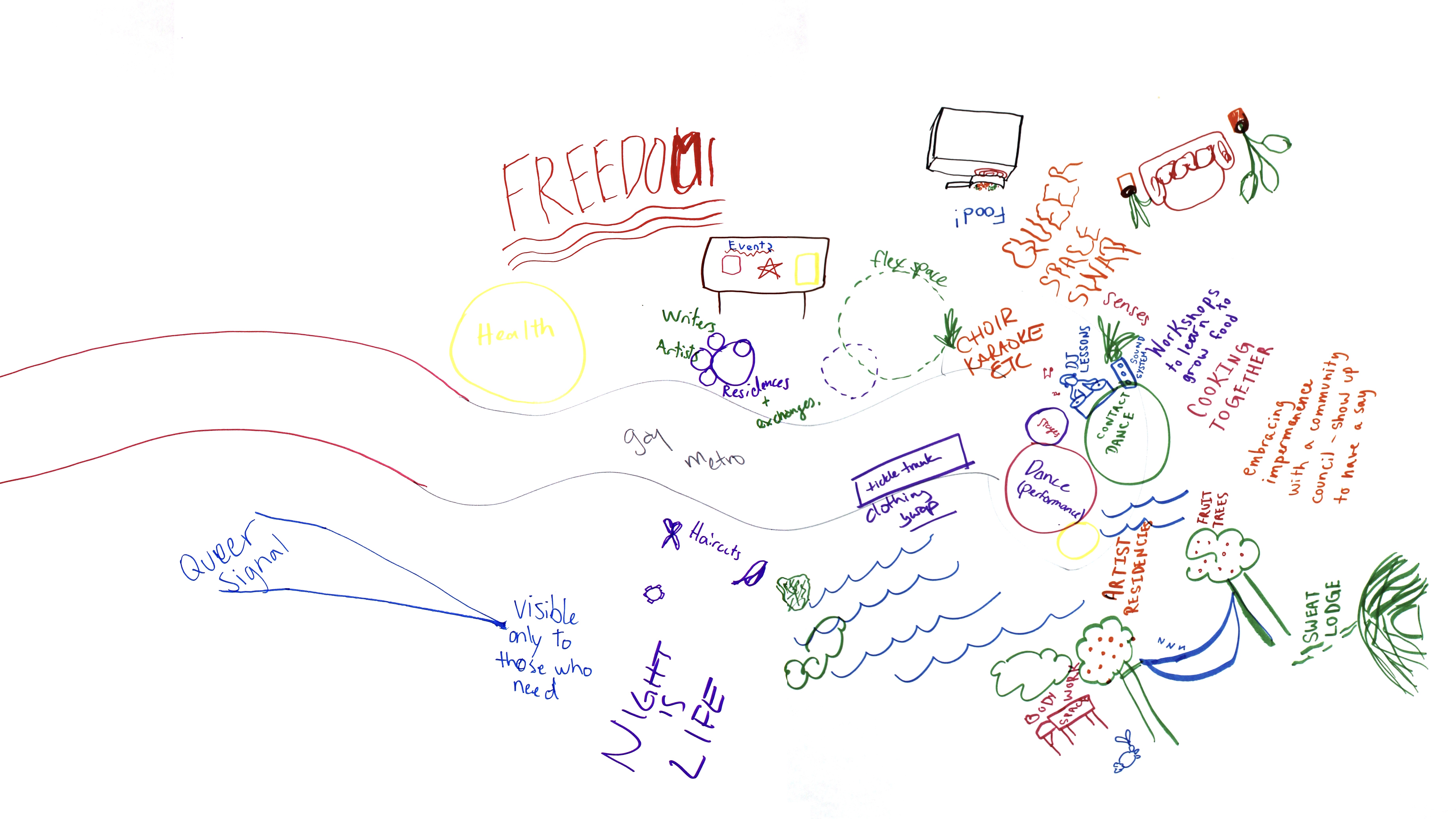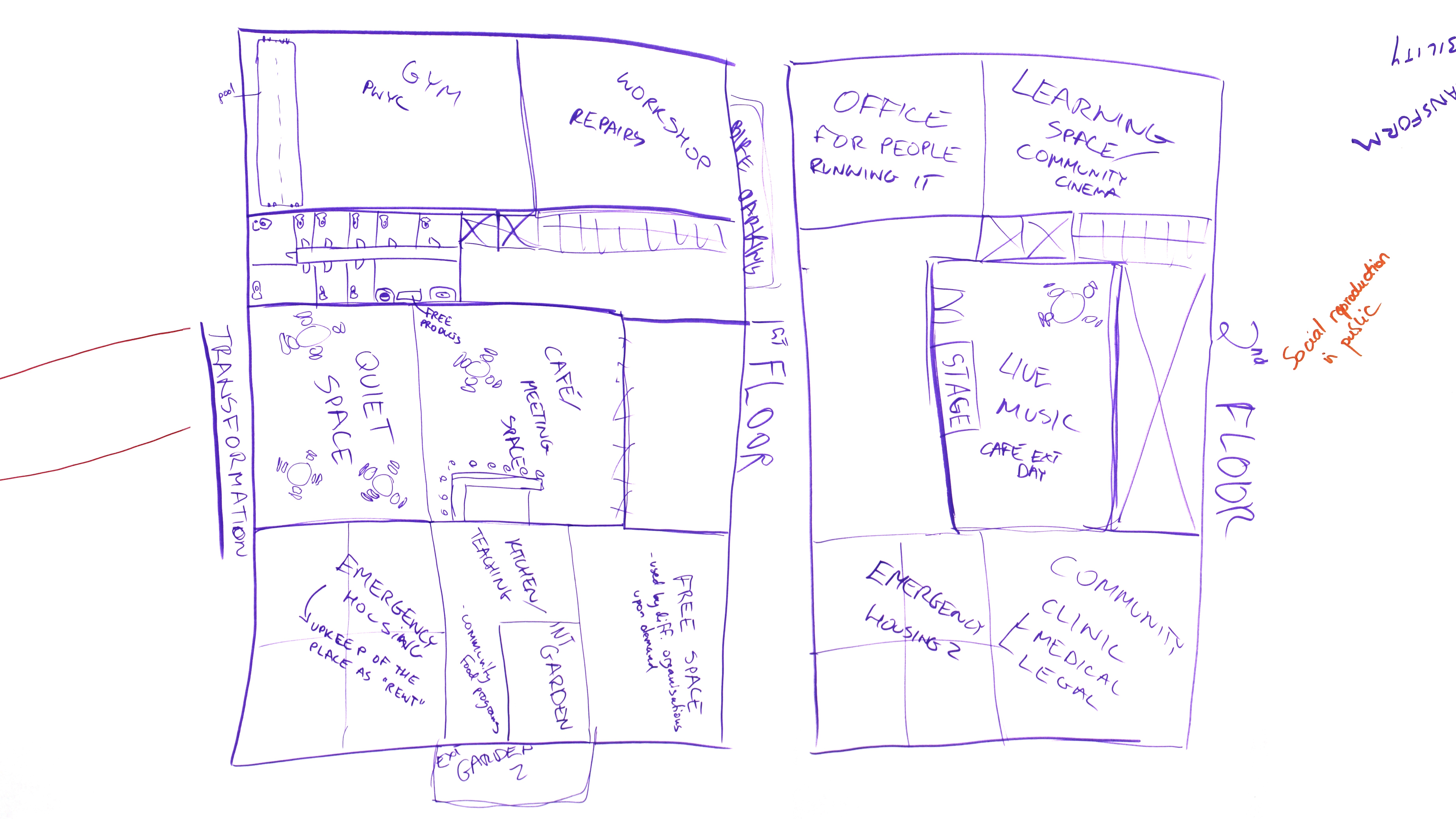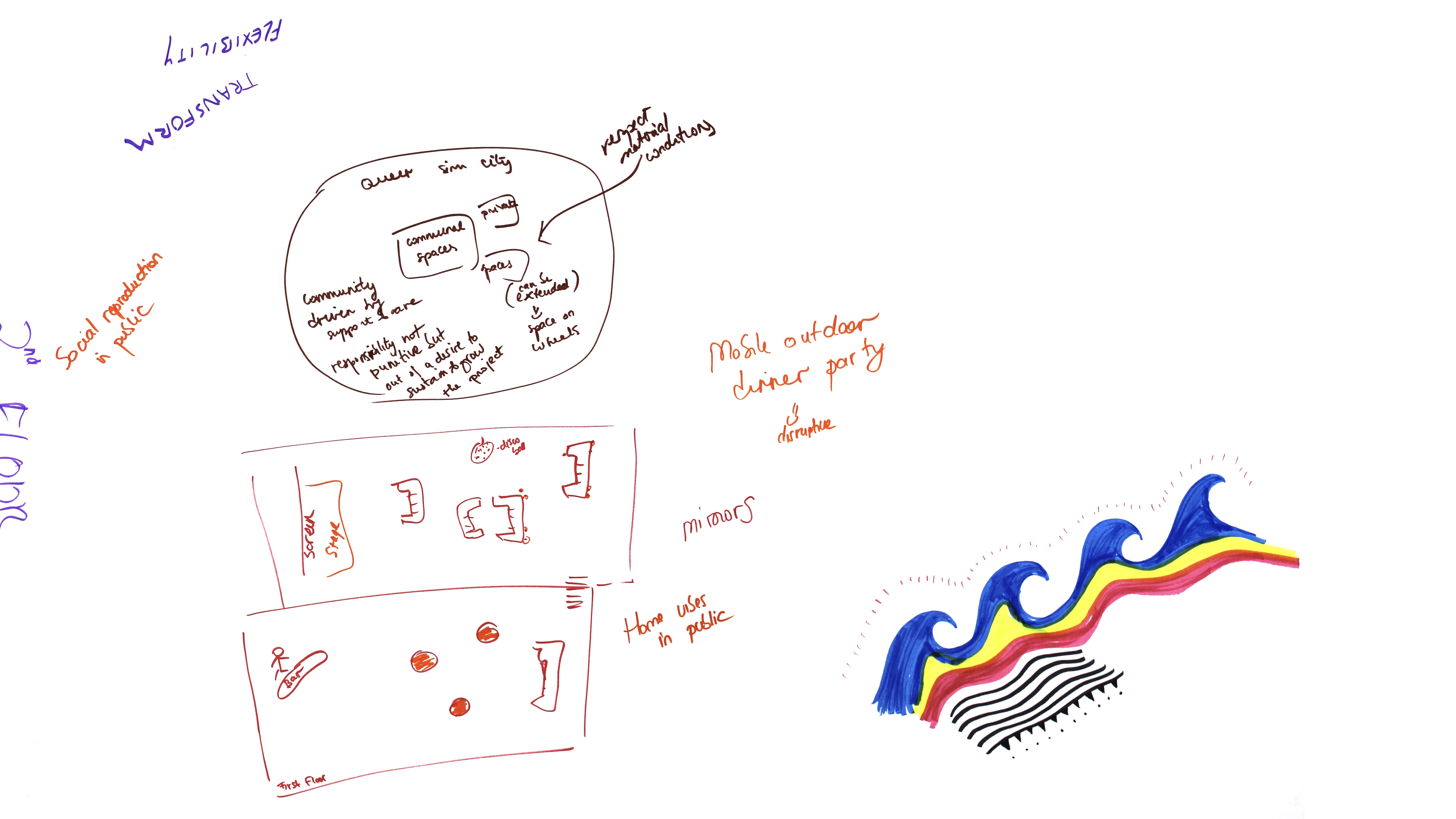The second activity of our two-part Queering the Night events took place on Wednesday, November 29th, from 3:30 PM to 5:30 PM. Set on the 5th floor of the MacDonald Harrington Building of Montreal’s McGill Campus, we queered the space throughout a drawing workshop. Among the 15 participants were architecture students, artists, newcomers to Montreal, and members of the Night-time Design with/for Marginalized Communities research group. The workshop was divided into two parts: the first focused on ideating and brainstorming, and the second on drawing and imagining.
The room configuration was important for the event’s success. It provided a sense of privacy and fostered togetherness. Participants were welcomed into the room with a single coat rack and snacks table, setting a warm and friendly atmosphere from the start. Movable screens were arranged around a long common table on which a scroll of paper was unrolled, with colored markers and post-its spread along its surface. Combined with the exposed roof trusses, the space felt intimate and convivial. The view of the sky, out of the dormer window, changed from day to night and referenced Queering the Night.
In the first part of the workshop, attendees were asked to reflect on what spaces of queer connections mean to them. They individually wrote down their ideas on post-its, which later came together during a group discussion that connected each person’s answers under common themes: Freedom, fantasy, play, art, discovery, security, (in)visibility, access, identity, community, solidarity, connection, chosen family, care, fun, pleasure, and bodies.

In the second round, we brainstormed on the challenges and opportunities of making inclusive spaces for our communities. Ex/inclusion, vulnerability, (dis)comfort, accessibility, support, mental health, neurodiversity, reliability, safe sex, sobriety, sustainability, third place, politics, finances, capitalism, rejection, homophobia, transphobia, racism, and ageism.

Although thematic identifications were useful to orient and group reflections, the workshop’s richness was in the nuances of each multifaceted answer and the discussions they spurred.
After taking a small 5-minute break for snacks and socializing, we came back to smaller groups of 3 for drawing and imagining utopian spaces of queer connections. Using ideas and themes from the brainstorming as a foundation, each group was encouraged to imagine fantasy programs, activities, and spatial devices: Transformations, flexibility, specificity, proximity, temporalities, access, freedom, discovery, creativity, care, support, joy, beauty, growth, and nature.

In celebrating queerness through vivid discussions and creative envisioning, our workshop became a brief utopian haven of queer connections. The shared experiences and diverse perspectives brought fantastical realms to life, transforming the event space into a momentary celebration of queerness. Queering the night transcended the workshop, becoming a powerful, ongoing affirmation of the richness of our connections.



